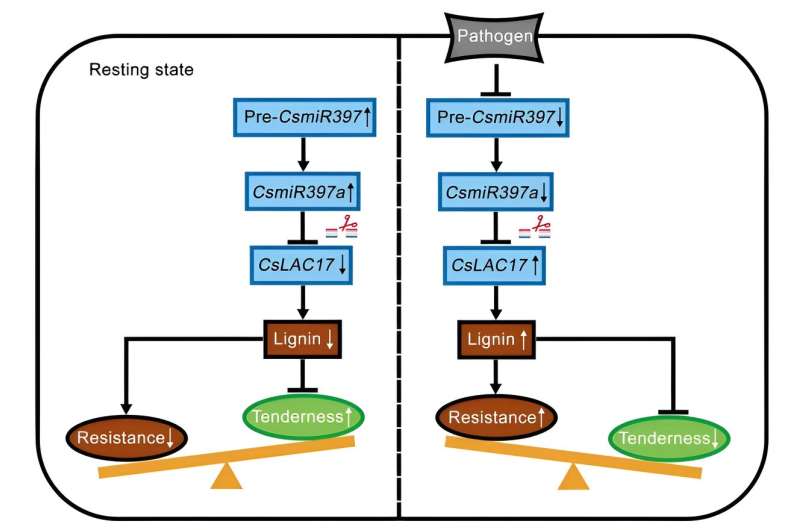
Tea, one of the oldest and most popular beverages, is cherished for its economic, medicinal, and cultural value. The quality of tea largely depends on the tenderness of young tea shoots, which are high in bioactive compounds.
However, achieving optimal tenderness while ensuring disease resistance, especially against gray blight, remains a significant challenge. To address these issues, researchers are delving into the regulatory mechanisms of lignin biosynthesis in tea shoots, aiming to find a balance that enhances both quality and resistance.
Researchers from Northwest A&F University have made a significant stride in this field, with their findings published in the Horticulture Research journal on March 28, 2024. The study delves into the regulatory role of the CsmiR397a-CsLAC17 module in lignin biosynthesis, the key to the tenderness and disease resistance in tea shoots.
The study discovered that the CsmiR397a-CsLAC17 module plays a pivotal role in regulating lignin biosynthesis in tea plants. When CsLAC17 was overexpressed, lignin content significantly increased, leading to enhanced disease resistance but reduced tenderness of the tea shoots.
On the other hand, CsmiR397a acted as a negative regulator of CsLAC17, reducing lignin accumulation and thereby increasing the tenderness of the shoots. These results were validated through experiments in both Arabidopsis and tea plants, demonstrating that the CsmiR397a-CsLAC17 module is essential for balancing lignin levels.
This balance is crucial as lignin strengthens cell walls against pathogen invasion but also affects the concentration of bioactive compounds in the shoots. Therefore, understanding and manipulating this regulatory mechanism can help achieve the optimal balance between quality and resistance, enhancing the overall value of tea plants.
Dr. Weidong Wang, the lead researcher, stated, “Our findings highlight the dual role of the CsmiR397a-CsLAC17 module in tea plants. By understanding and manipulating this regulatory mechanism, we can develop tea cultivars that offer both high quality and robust disease resistance, benefiting both producers and consumers.”
This study provides valuable insights into the genetic regulation of lignin biosynthesis in tea plants. The CsmiR397a-CsLAC17 module offers a potential target for breeding programs aiming to improve tea quality and resistance. The ability to balance tenderness and disease resistance could lead to the development of superior tea cultivars, enhancing the economic value and sustainability of tea production.
More information:
Hongbin Yang et al, The CsmiR397a-CsLAC17 module regulates lignin biosynthesis to balance the tenderness and gray blight resistance in young tea shoots, Horticulture Research (2024). DOI: 10.1093/hr/uhae085
Provided by
Chinese Academy of Sciences
Citation:
Harvesting strength: How tea plants fight off disease while staying tender (2024, July 1)
retrieved 2 July 2024
from https://phys.org/news/2024-07-harvesting-strength-tea-disease-staying.html
This document is subject to copyright. Apart from any fair dealing for the purpose of private study or research, no
part may be reproduced without the written permission. The content is provided for information purposes only.




